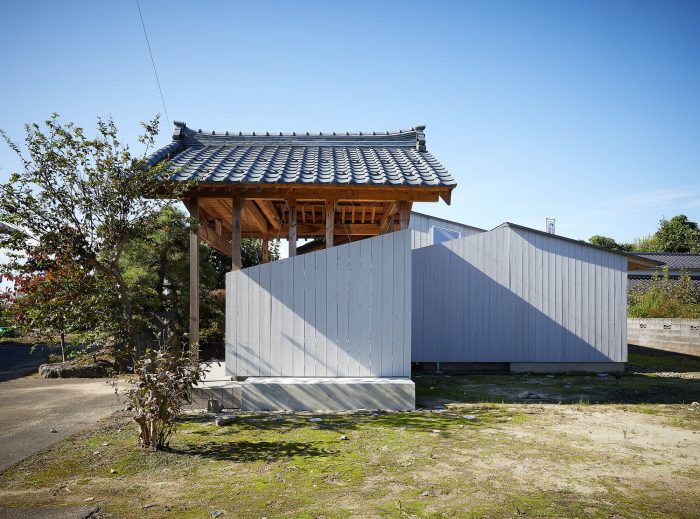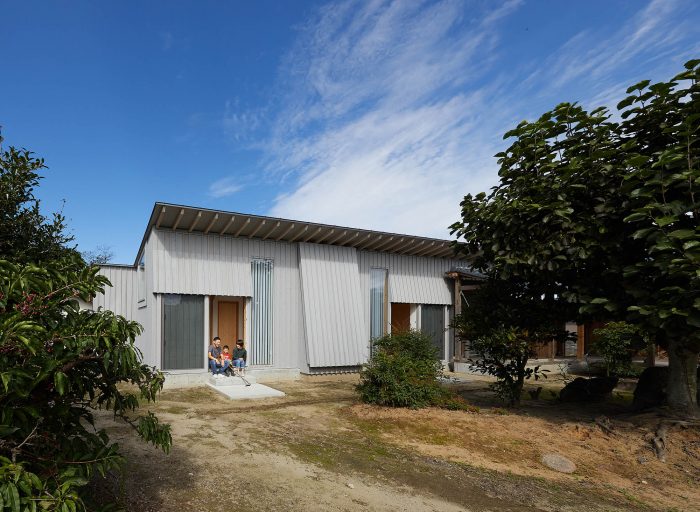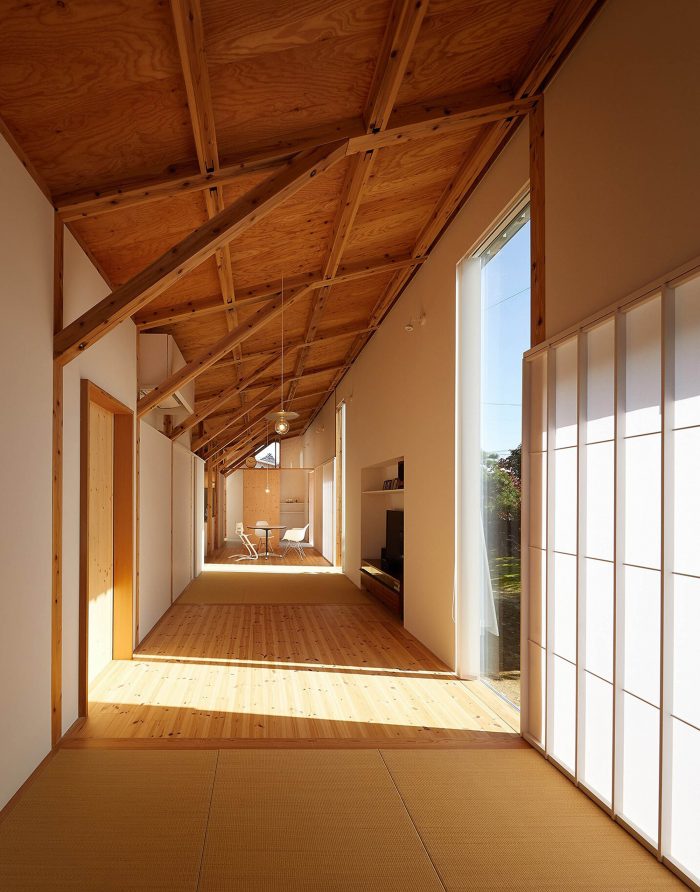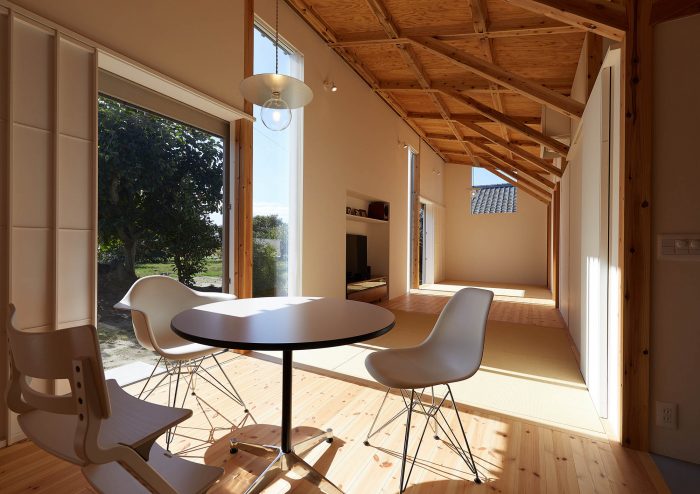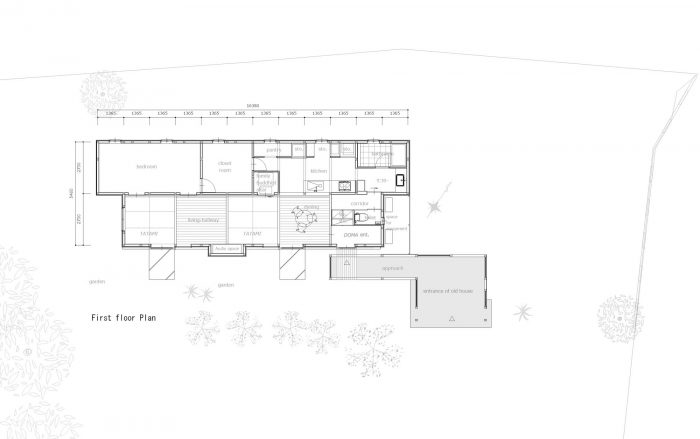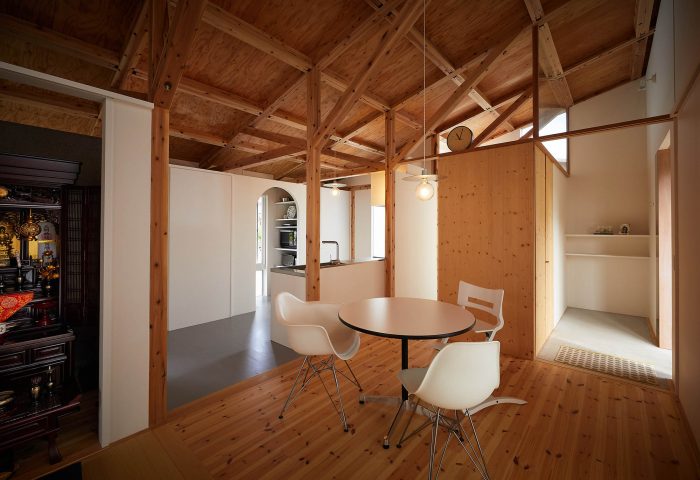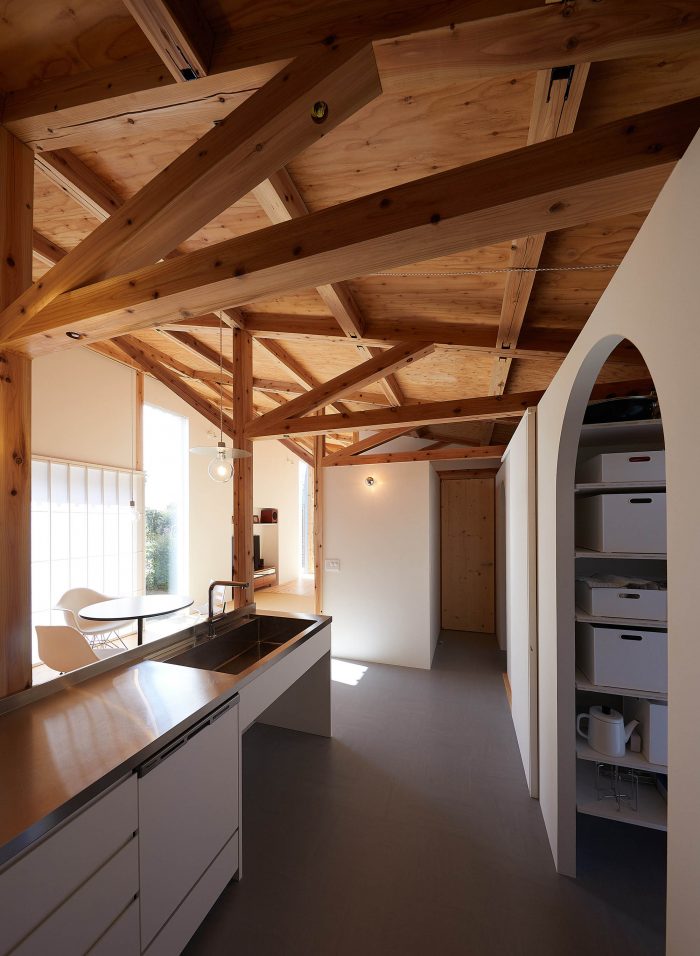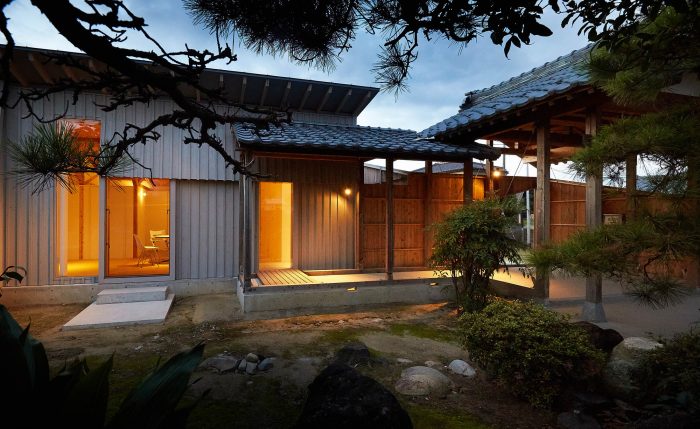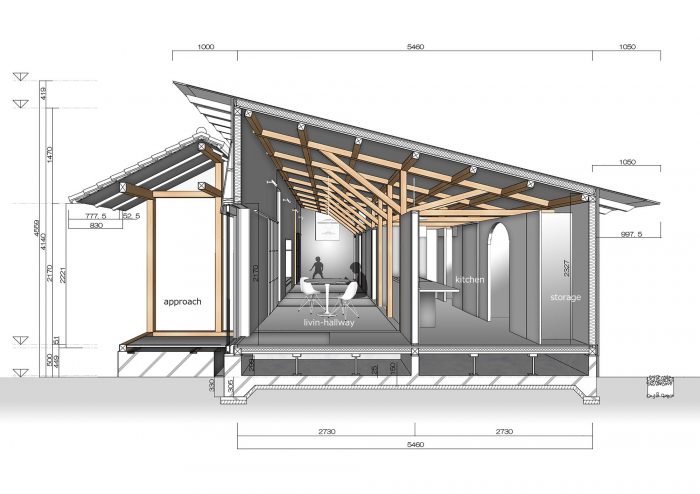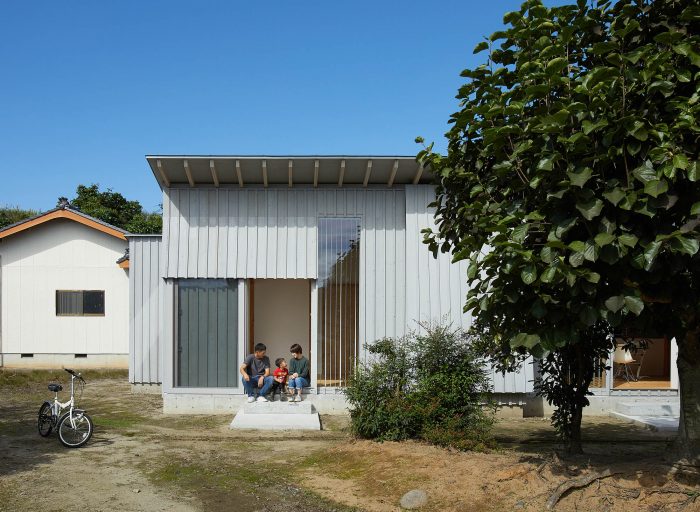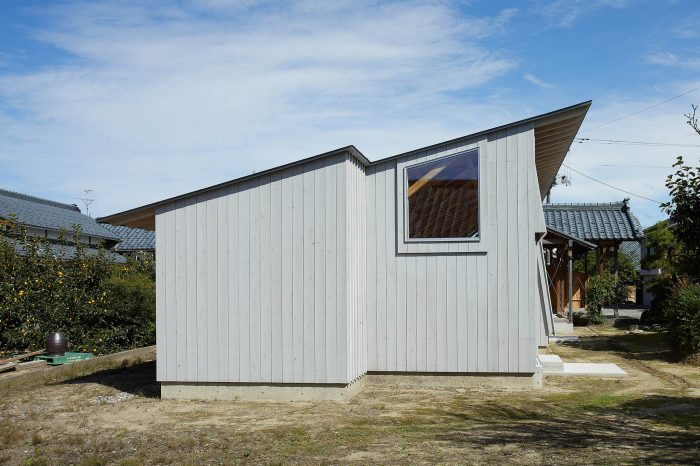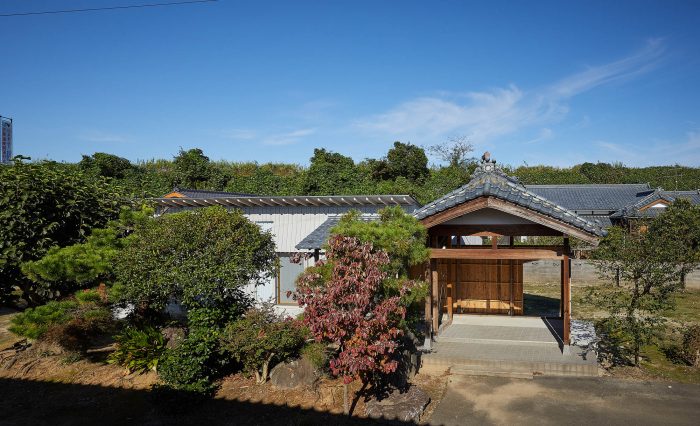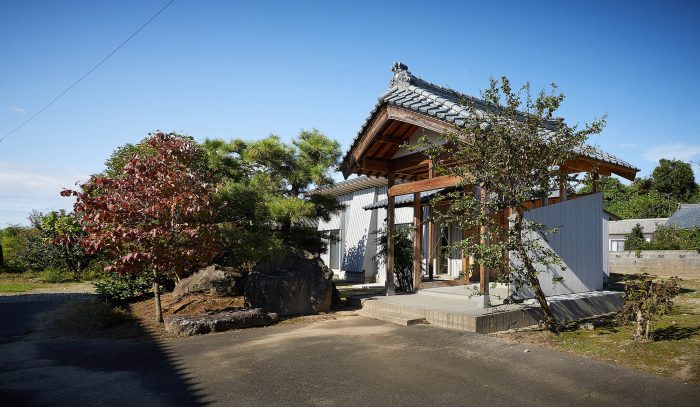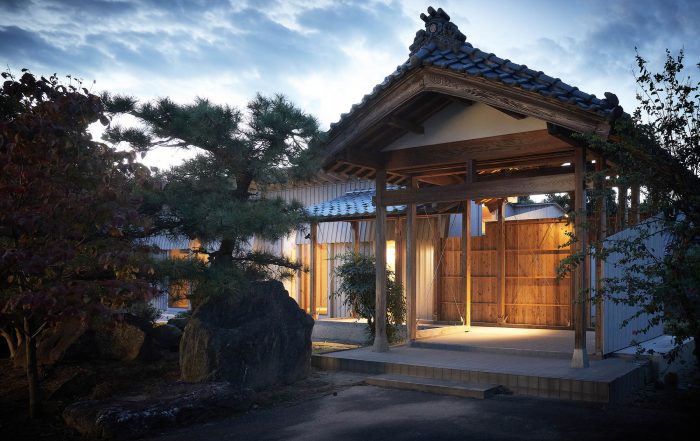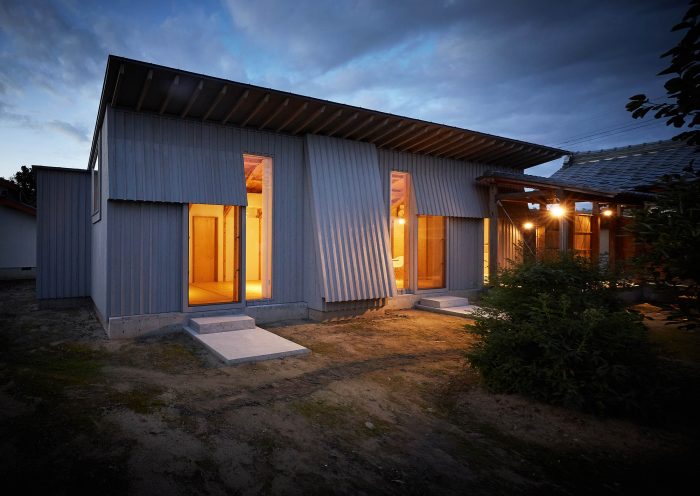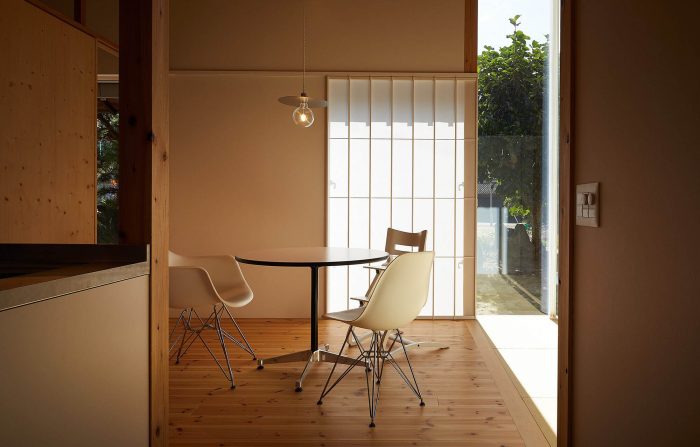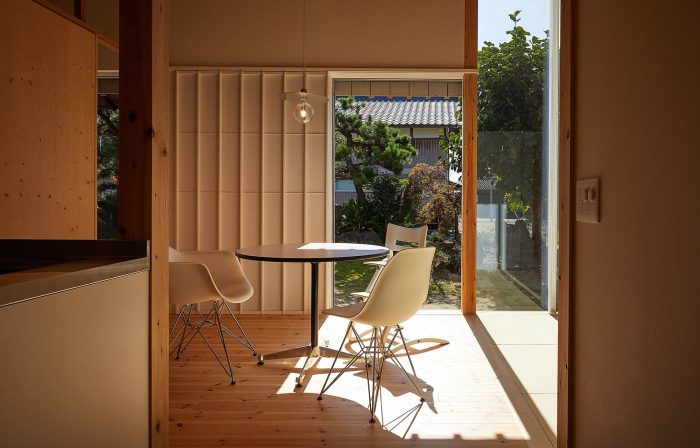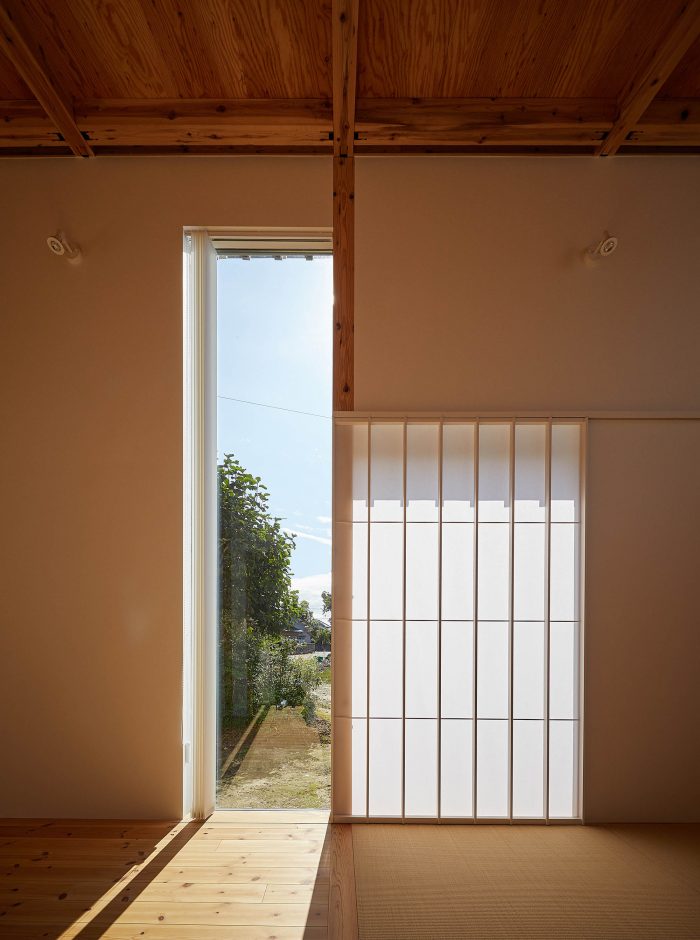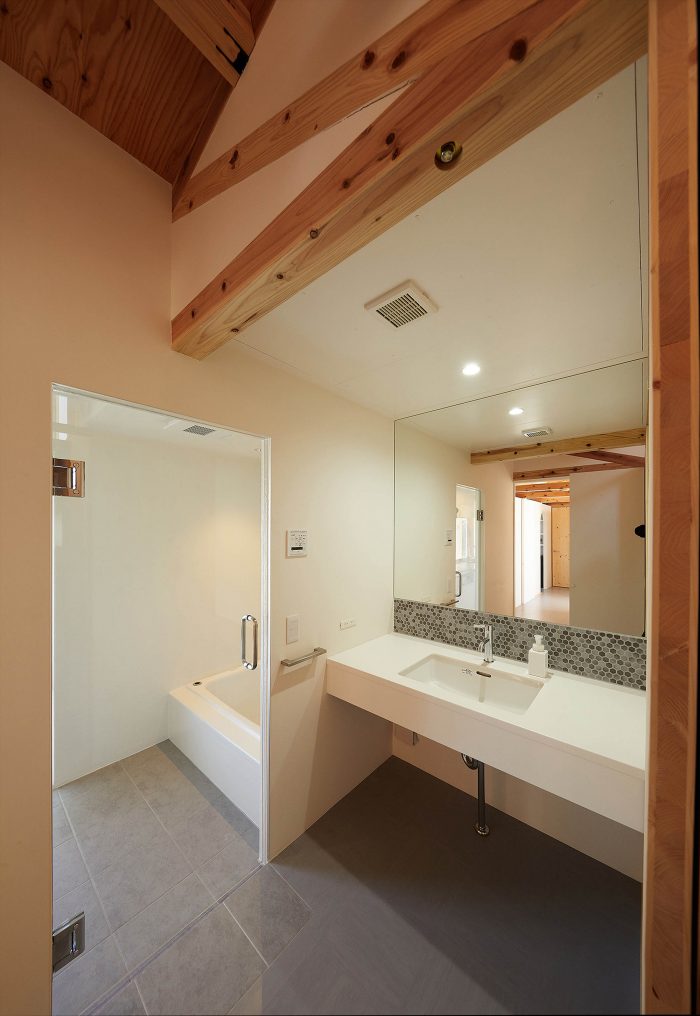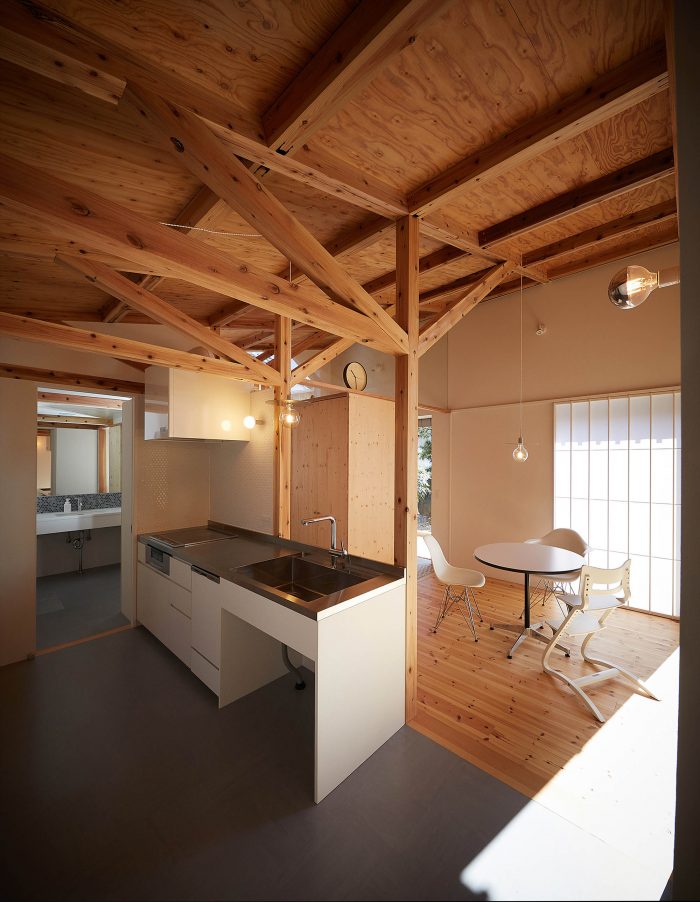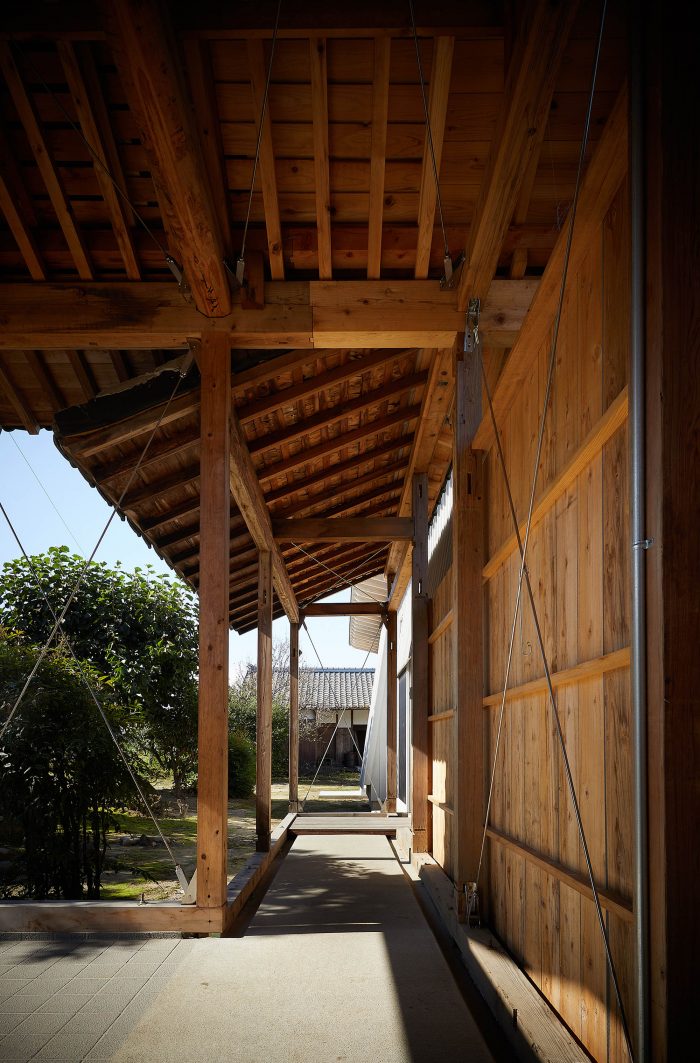这座单层住宅位于新泻县世吕镇的一个农业村。该地区提供了一个很久以前建立的农耕文化的一瞥。在这个地方,这种诞生于阳光和土壤的产业与乡村生活携手并进,几百年来都是如此。这里的男人和女人日复一日地在土地上生活和工作,与大自然和它所提供的一切和谐相处。
This single-storey dwelling is located in a farming village in Seiro Town, Niigata Prefecture. The area offers a glimpse of a farming culture established long ago. It’s a place where this industry born of the sun and soil carries on hand in hand with village life much as it has for hundreds of years. Here men and women live and work the land day in and day out, in harmony with nature and all it has to offer.
粗略一看,我们看到村庄由独立的建筑组成,这些建筑间隔开来,每个人的主要单层住宅由东向西延伸,以回应太阳的轨迹。这些住宅的每个房间都朝南,有自己的阳台,通往住宅的花园。每个农舍都有一个向南突出的宽敞的大前门,在那里可以豪华地接待客人,与内部住宅分开。这些特点都是当地的特色。
At a cursory glance, we see village comprised of individual buildings which are spaced apart, with each holding’s main single-storey dwelling extending east to west in response to the path of the sun. Each room in these dwellings faces south, with its own verandah leading into the residence’s garden. Each of these farm houses has a spacious grand front entrance jutting out southward where guests can be lavishly received, separate from the inner dwelling. These features are characteristic of the locality.
该地块上的农舍面积超过600平方米,不仅被认为对三口之家来说太大,而且随着时间的推移,已经陷入恶化的状态,被植物和动物所取代。我们决定,唯一现实的做法是拆除和重建。然而,我们建议保留老建筑非常庄重的南面入口,并重新利用这个老建筑的遗迹作为通往新建筑的通道。毕竟,这个入口多年来一直是一个半公共的空间,村民们在这里打招呼和享受日常的谈话–这个功能肯定值得保留。
At over 600 square meters, the farmhouse that stood on the plot was deemed not only too large for the family of three, but had over time fallen into a state of deterioration and been overtaken by plants and animals. It was decided that the only realistic course was to demolish and rebuild. We did however propose preserving the old building’s very dignified southern entrance and repurposing this vestige of the old building as an approach to the new. After all, the entrance had for years functioned as a semi-public space where villagers would greet and enjoy day-to-day conversation – a function surely worth preserving.
自古以来,该地区的住宅、仓库和谷仓都是用当地的日本杉木柱子和横梁以及雄伟的松木托梁建造的。对于新的建筑,我们选择只使用当地采购的3.5太阳(105毫米)方形的日本红柏木材,这些木材都必须在Niitaga进行切割,以帮助保护当地的林业产业。根据结构工程师的评估,3.5太阳桁架被广泛采用,以使相对脆弱的红柏木材能够承受当地规定的1.2米的雪载荷。
Since ancient times, the dwellings, storehouses, and barns of the area were constructed using locally sourced Japanese cedar pillars and crosspieces with imposing pine joists. For the new building, we chose to use nothing but locally sourced 3.5 sun (105mm) squared Japanese cedar lumber, which would all have to be cut on Niitaga, serving to help preserve the local forestry industry. Based on the structural engineer’s assessment, 3.5 sun trusses were extensively employed to allow the relatively weak cedar timber to bear the prescribed local snow load of 1.2m.
这种桁架系统支持着计划中的跨度为2730毫米的屋顶,这样过度的压力就不会集中在中心区域的一根支柱上。这是通过在两边放置同等跨度的桁架来实现的。桁架在纵向上每隔1365mm排列一次,以符合结构要求。桁架的组合创造了令人满意的节奏,以及界定空间的重点。
This truss system supports a roof spanning 2,730mm planned so that excessive stress does not concentrate on a pillar in the central area. This is achieved by placing a truss of equal span on both sides. Trusses are arranged every 1,365mm longitudinally to conform to structural requirements. The trusses combine to create a satisfying rhythm, as well as accents to define space.
在柱子和横梁上自由地使用异常薄的3.5阳光木材,形成了一个特别轻盈和通风的住宅空间。在建筑的单层上出现了一个有序的网格,由桁架结构定义的11个单元,面积为2730毫米。由五个单元组成的生活走廊,连接了北部的私人区域和南部的花园和通道。它作为一个生活和餐饮区,但不限于这些功能。这个空间可以适应各种可能的用途,以适应我们生活中的许多变化。
This liberal use of unusually thin 3.5 sun lumber for pillars and beams results in an exceptionally light and airy residential space. An orderly grid arises on the building’s single level, laying out eleven cells of 2730mmsq defined by the truss structure. The living-hallway, comprising five cells, connects a private zone to the north with the garden and approach to the south. It serves as a living and dining area, but is not limited to these functions. The space is adaptable to a wide variety of possible uses to suit the many changes throughout our lives.
Architects: Tokmoto architects design
Area: 82 m²
Year: 2020
Photographs: Noriki Matsuzaki
Manufacturers: Grohe, Panasonic, Planet Japan, Sankyo Tateyama, Siljan
Architecture Design: Kenrak Tokmoto
Structure Design:Tetsuya Tanaka structure design office
City:Seirō
Country:Japan


